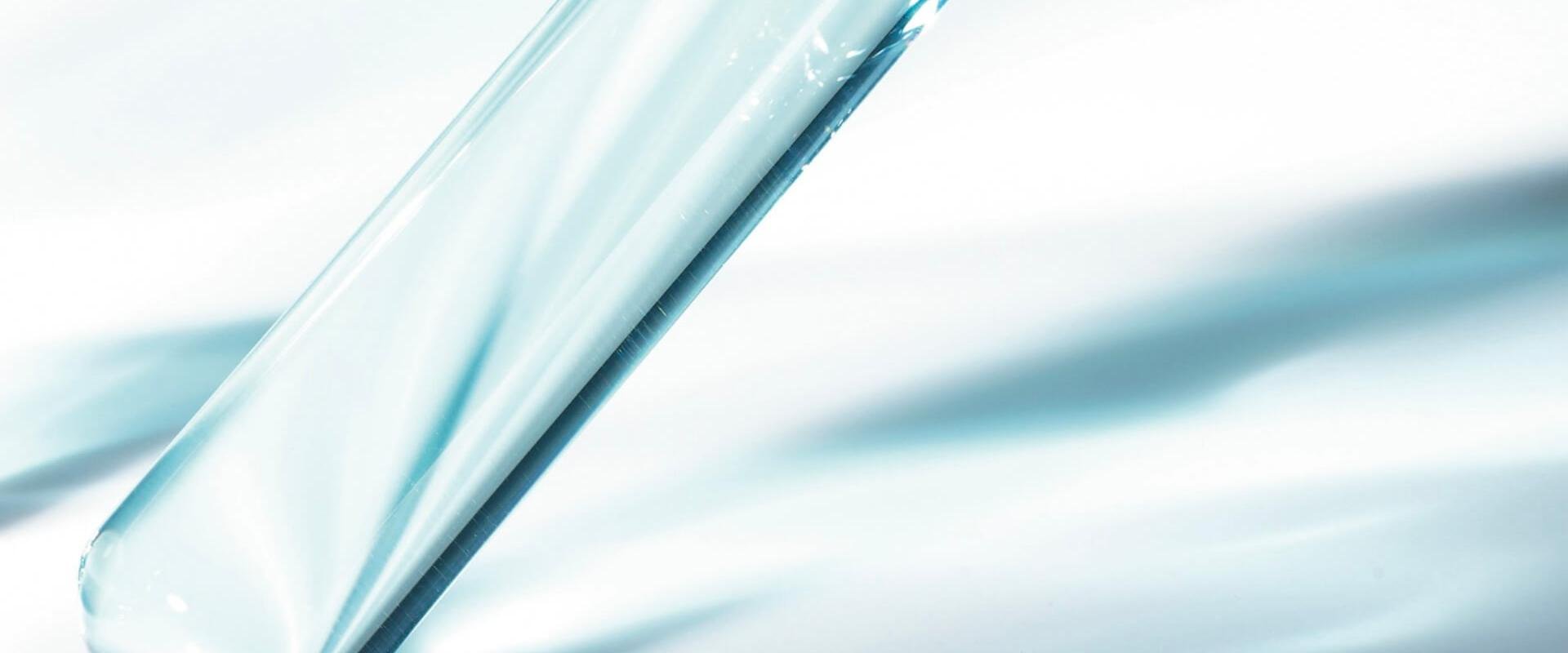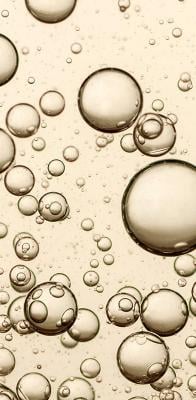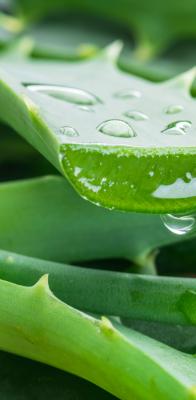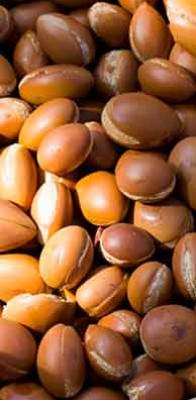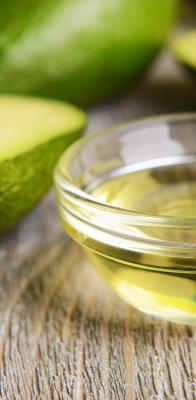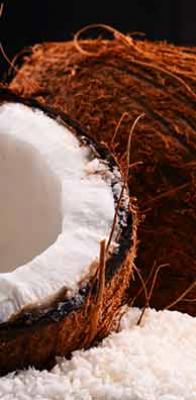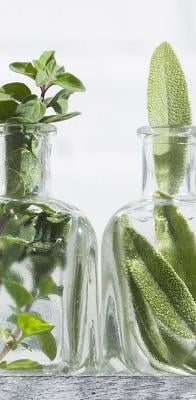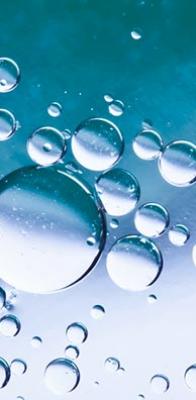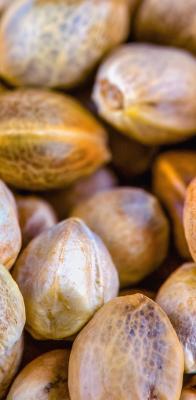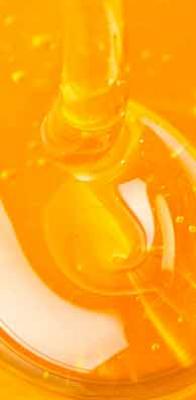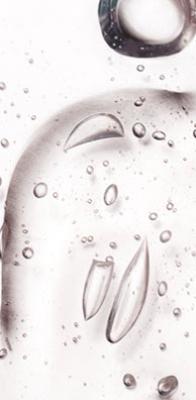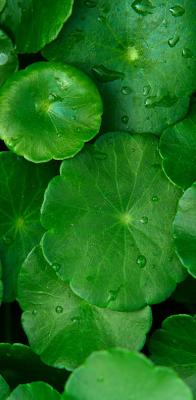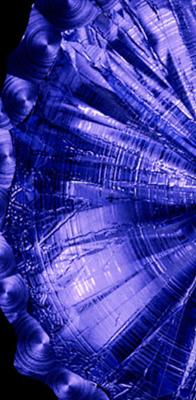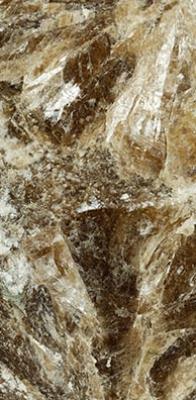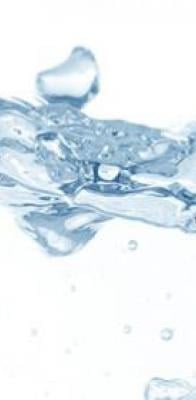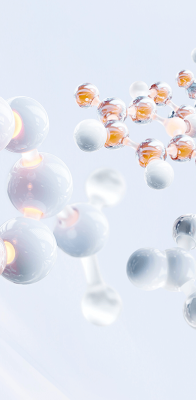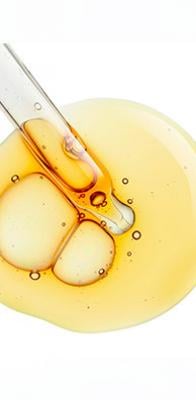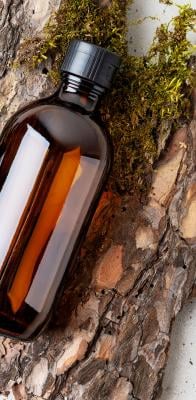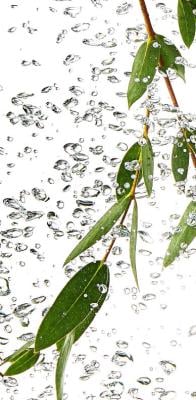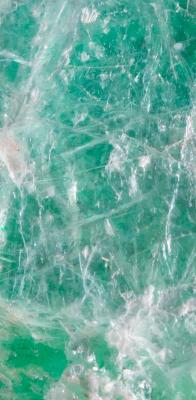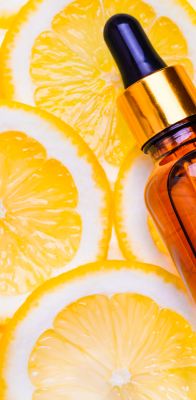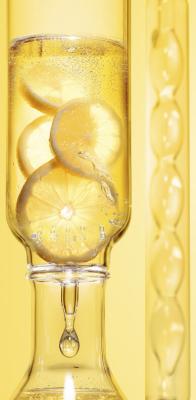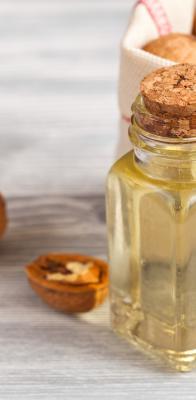What is ferulic acid?
Ferulic acid (C10H10O4) is a phenolic acid derived from cinnamic acid. It is a cosmetic ingredient of plant origin with powerful antioxidant properties. It plays an essential role in protecting the skin against damage caused by oxidative stress, thus helping to slow down premature skin ageing.

The name "ferulic" is derived from "Ferula", which refers to a group of 170 species of herbaceous plants in the Apiaceae family. Ferulic acid is found in many plants, including cereals (oats, rye, corn), the bark of certain trees (pine, fir), fruit (rhubarb, walnuts), vegetables (spinach) and coffee.
Through its many properties, ferulic acid plays an important role in the solidification of plant cell walls. It strengthens plant cells and helps them to resist the damaging effects of free radicals. Ferulic acid is also involved in protecting plants against the invasion of pathogens.
In cosmetics, it is used mainly for its antioxidant, soothing and brightening properties.
The ferulic acid in our products appears in the list of ingredients on the packaging, under the name "FERULIC ACID".
Where does it come from?
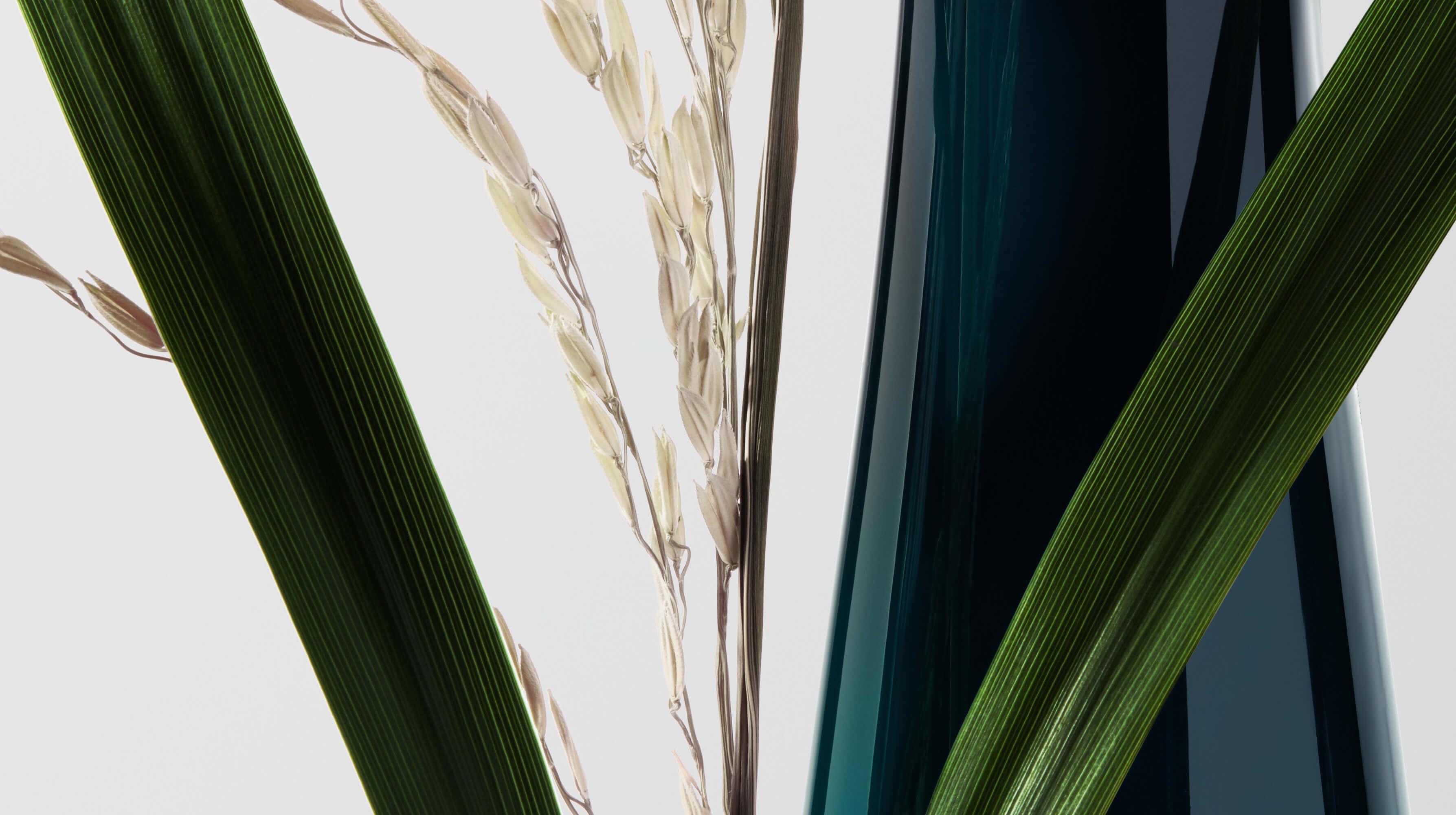
The ferulic acid used by L'Oréal is extracted and purified from the rice bran of Oryza sativa Linne (Gramineae) and its germ. This production process respects the principles of green chemistry, which means that it uses as little energy and water as possible, and prioritises the prevention of waste.
What is it used for?
Ferulic acid is widely used in cosmetics for its many benefits for the skin.
Firstly, it is appreciated for its powerful antioxidant action, making it an essential active ingredient in the fight against premature skin ageing and the appearance of signs of ageing, such as wrinkles, sagging, and pigmentation spots.
It is also known to have a brightening effect, helping to reduce dark spots and even out skin tone.
It is also used for its plumping action, helping to give skin a firmer appearance.
Ferulic acid is also highly prized for its soothing properties, which help to ease discomfort and reduce redness.
It is also sometimes used in certain hair care products for its antioxidant properties that help in combating hair loss.
-
Antioxidant
-
Plumping
-
Brightening
How does it work?
Ferulic acid is a powerful antioxidant1 that works by neutralising free radicals, i.e., highly reactive molecules that are unstable because of their free electron. These molecules are generated naturally by our metabolism during energy production, but can also be over-produced as a result of various factors such as lifestyle (smoking, poor diet, etc.), UV rays and pollution . Free radicals damage our body's healthy cells and proteins, accelerating the skin ageing process. Ferulic acid is also effective in combating the appearance of brown spots and bringing radiance and luminosity to the complexion.
Thanks to its hydroxy and phenoxy groups, ferulic acid deactivates free radicals, making them more stable and less reactive. A recent study2 showed that, as well as regulating antioxidant mechanisms, ferulic acid regulates mechanisms that cause senescence and cell damage.
This active ingredient has also been shown to reduce the gene expression of MMP-1 and MMP-3 genes, demonstrating its protective effects on the skin by promoting the reconstruction of the extracellular matrix. For example, by helping to inhibit the activity of matrix metalloproteinase-1 (MMP-1), the enzyme responsible for the sun-induced degradation of collagen-1, ferulic acid helps to maintain the quality and integrity of collagen.3
In addition to its many benefits, this ingredient also has soothing properties1 for the skin. It is capable of reducing skin inflammation and soothing irritation and redness, particularly that caused by exposure to the sun.
1 Graf E. (1992). Antioxidant potential of ferulic acid. Free radical biology & medicine, 13(4), 435–448. https://doi.org/10.1016/0891-5849(92)90184-i
22Hahn, H. J., Kim, K. B., Bae, S., Choi, B. G., An, S., Ahn, K. J., & Kim, S. Y. (2016). Pretreatment of Ferulic Acid Protects Human Dermal Fibroblasts against Ultraviolet A Irradiation. Annals of dermatology, 28(6), 740–748.
3 Pluemsamran, T., Onkoksoong, T., & Panich, U. (2012). Caffeic acid and ferulic acid inhibit UVA-induced matrix metalloproteinase-1 through regulation of antioxidant defense system in keratinocyte HaCaT cells. Photochemistry and photobiology, 88(4), 961–968. https://doi.org/10.1111/j.1751-1097.2012.01118.x
4 Park, H. J., Cho, J. H., Hong, S. H., Kim, D. H., Jung, H. Y., Kang, I. K., & Cho, Y. J. (2018). Whitening and anti-wrinkle activities of ferulic acid isolated from Tetragonia tetragonioides in B16F10 melanoma and CCD-986sk fibroblast cells. Journal of natural medicines, 72(1), 127–135. https://doi.org/10.1007/s11418-017-1120-7
How is it used in our products?
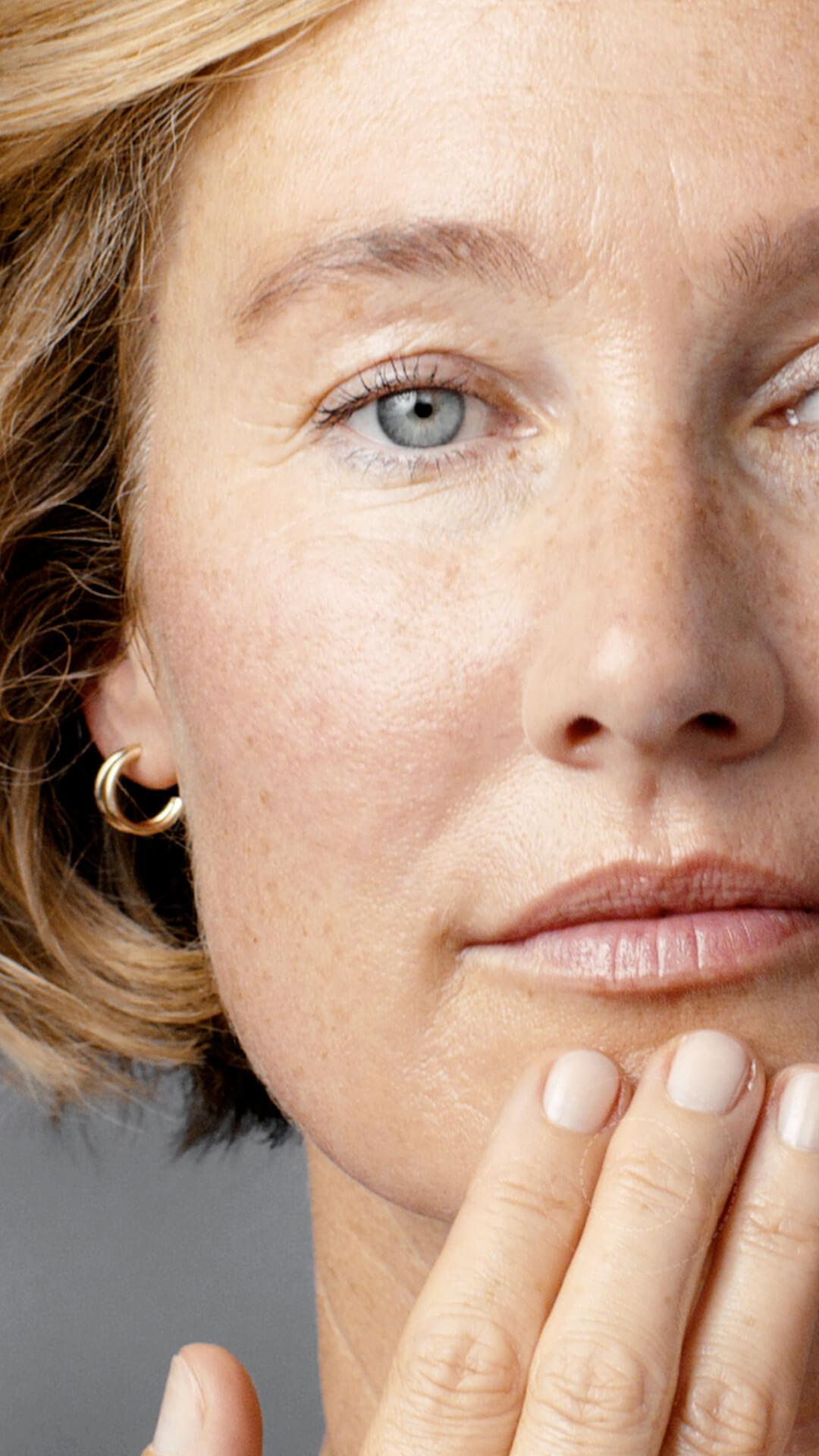
In cosmetics, ferulic acid is very well tolerated by all skin types.
This antioxidant is generally used in serums, creams and lotions to reduce the signs of ageing (wrinkles, sagging skin and pigmentation marks) and to make skin brighter, firmer and smoother.
Ferulic acid does not increase photosensitivity, meaning morning application is not contraindicated. In our products, it is sometimes combined with vitamins C and E. It has been shown that ferulic acid stabilises these two vitamins and also enhances their antioxidant properties. This combination of pure natural antioxidants thus provides substantial synergistic photoprotection against UVA oxidative stress in the skin and is useful for protecting against photoageing.5
5 Lin, F. H., Lin, J. Y., Gupta, R. D., Tournas, J. A., Burch, J. A., Selim, M. A., Monteiro-Riviere, N. A., Grichnik, J. M., Zielinski, J., & Pinnell, S. R. (2005). Ferulic acid stabilizes a solution of vitamins C and E and doubles its photoprotection of skin. The Journal of investigative dermatology, 125(4), 826–832. https://doi.org/10.1111/j.0022-202X.2005.23768.x

